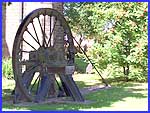
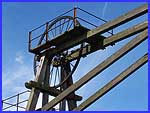
Underwood & Brinsley - Wheels Of Industry
w/e 28 August 2005
All this week's pictures were taken
with a Kodak DX6490
Whilst rummaging through the bookcase in search of
information for this page, I quite by chance, picked up an old
battered hardback book called "Out of Darkness" by
E. G. Thorpe; a story about a typical Derbyshire mining family
that I had inherited from an uncle. First published in 1953,
Chapter 1 begins with this paragraph:
Colliers coming off the day shift were straggling up Pit Lane
towards the main road and the afternoon sun, walking all the
way in the shadow of the pit hills. They sprawled everywhere,
these hills, a restless black tide swirling across the green
fields, over bush and hedgerow, possessing the earth. Fires were
smoking on the tipping end and a horse was toiling up the incline
with a tram full of dirt crawling behind it like a tiny fat beetle.
The old hills, no longer used, were turning grey and their sides
were cracked wide open and dotted with patches of weeds which
would soon be flowering into tall red willowherb and yellow ragwort
daisies, an incongruous gaiety in that desolate land.
That descriptive passage could equally have applied to any of
the mining villages on the Nottinghamshire and Derbyshire coalfield
and elsewhere for that matter. The neighbouring villages of Underwood
and Brinsley were surrounded by coal mines and would have been
no exception. Lying close to Eastwood, Nottinghamshire, birthplace
of the author D. H. Lawrence, they are part of what he called
"The Country Of My Heart" and contain some of the locations
that he used in his novels. Today the pits have all gone but
the men who mined the raw material that drove the wheels of industry
are still remembered. We'll begin our brief look at the villages
at Underwood Church.
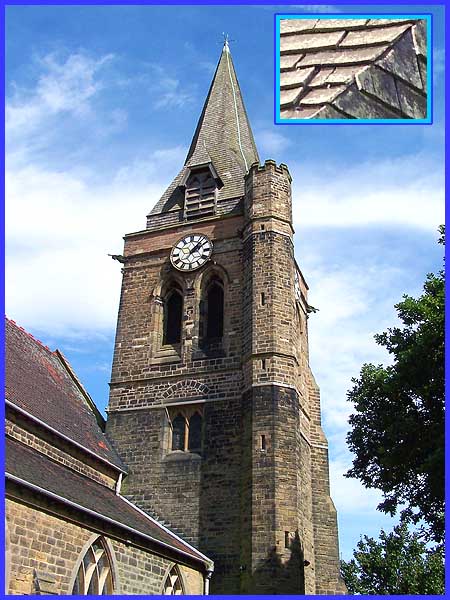
Hunderwode was listed in the 11th century Domesday Book and acquired
its present name in 1490 but a church was not erected until 1889
after being commissioned at a cost of £5000 by the Right
Honourable Francis Thomas de Grey Cowper, 7th Earl Cowper. The
Earl was a British Liberal politician who also served as Lord
Lieutenant of Ireland between 1880 and 1882. The church, dedicated
to St Michael & All Angels was designed by the Birmingham
'Gothic' architect, J. A. Chatwin in the style of the 14th century,
with the clock being installed in 1920 as a memorial to the local
men who died in the First World War. The spire is visible from
the surrounding countryside and is notable for being covered
by oak shingles (see inset).
|
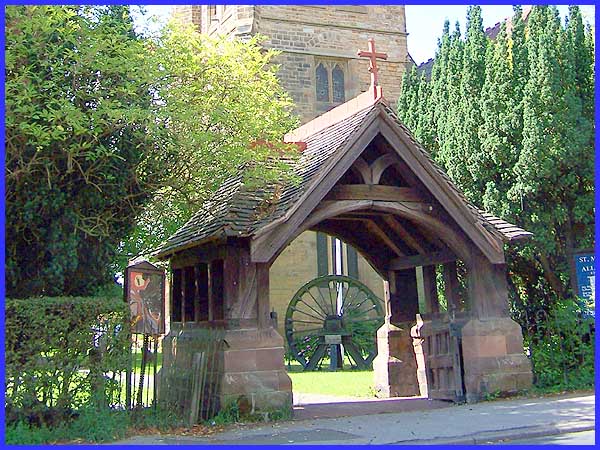
Like the church, the lych gate was also designed by J. A. Chatwin
for Earl Cowper and was built at the same time as the church.
A more recent addition in the churchyard is the part of the Pye
Hill Colliery Headstock which can now be seen from Church Lane
through the lych gate.
|
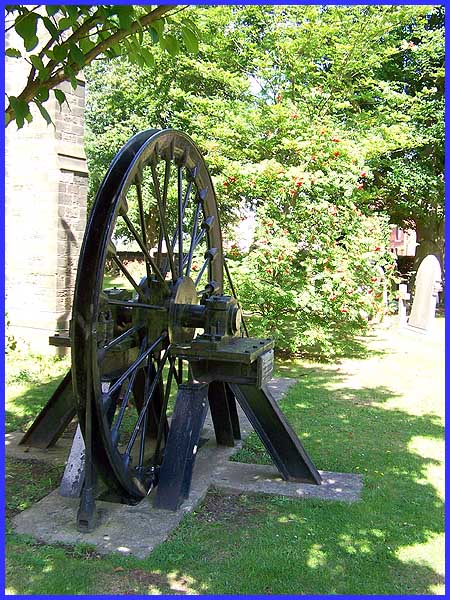
The wheel from the headstock stands as a tribute to the importance
to the village of the mining industry and the plaque on the headstock
reads "A memorial to Pye Hill Number 1 Colliery dedicated
by the Bishop of Sherwood the Rt. Reverend R. Darby on 28th September
1985." Coal had been mined in the area for nearly 700 years
since the Middle Ages and there may even have been workings back
to Roman times. As we saw in the Monks Way series, the monks of nearby Beauvale
Priory held rights to coal mining. The coal was extracted over
time by shallow outcrops, bell pits, drift mines and finally
deep mines but came to an end in Underwood in the 1980s.
|
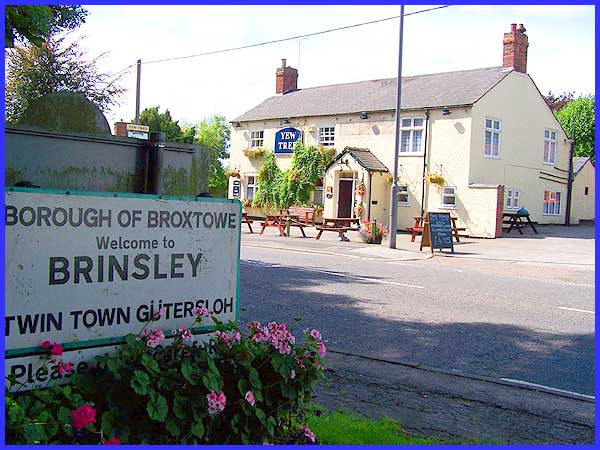
The memorial in Underwood churchyard stands in the shadow of
a tree. Although it is not a yew, yew trees have long been synonymous
with churchyards. A pub bearing the name "Yew Tree"
stands on the main road between Underwood and Brinsley, very
accessible to miners after a long hard shift and no doubt the
landlord here would have seen the inside of many a miner's pay
packet long before it reached home.
|
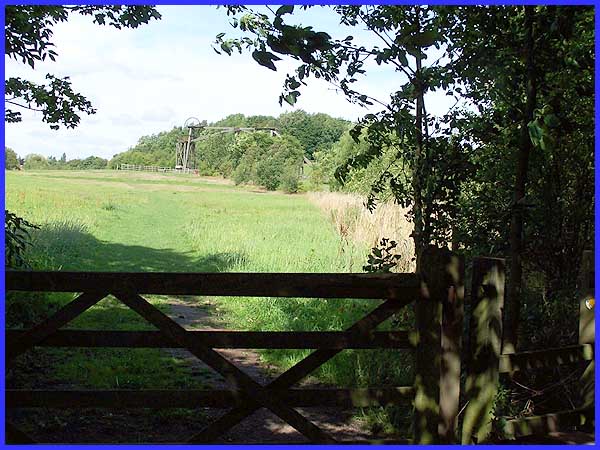
At the other end of Brinsley is the site of the former Brinsley
Colliery which has now been transformed into a picnic area. D
H Lawrence's father worked at the colliery and DHL himself used
the location in his work calling it Begarlee in "Sons and
Lovers". A film of the story starring Trevor Howard was
made in 1960 and the colliery scenes were shot here. Lawrence
also used the colliery as the main setting in the short story
published in 1911 called "Odour of Chrysanthemums"
in which he mentions a railway line. The route of that line now
forms one of a number of walks in the area, to and around the
picnic site.
|

A shaft at Brinsley Colliery was originally sunk to a depth of
450 feet (137m) but good quality coal had almost been exhausted
by the 1870s. A second deeper shaft of 780 feet (238m) was sunk
in 1872 when tandem headstocks were erected but the reserves
were once again exhausted by 1930. The shafts were kept open
for another 40 years after this to provide access to neighbouring
pits. The headstocks that now stand on the original site in Brinsley
are the original structures of 1872, having been restored by
British Coal and Nottinghamshire County Council in 1991. The
wheels are no longer turning but remain as a monument to their
undoubted contribution to the industrial prosperity of the area.
|

